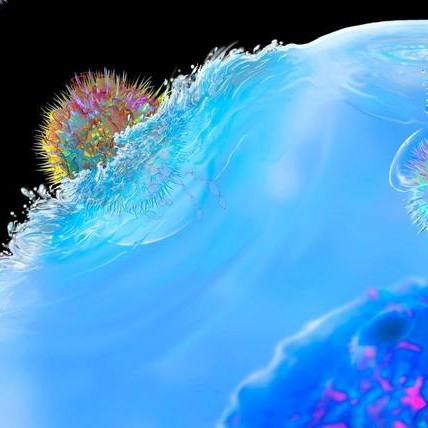-
Biotherapeutics
Science Saturday: Harnessing the body’s ability to heal

Researchers at Mayo Clinic are studying ways to engineer human-like tissue to bolster the body’s ability to heal itself. Scientists in the Regenerative Medicine Biomaterials and Biomolecules Lab have engineered biomaterials that could regenerate tissue capable of restoring injured nerves and bones.
They’ve discovered that biomaterials derived from polymers are biodegradable. When used along with growth factors to form scaffolds, these materials are capable of recruiting cells that grow into replacement nerves and bones. Scaffolds are devices that assist in creating tissue. As the new tissue develops, synthetic materials gradually decompose, leaving no trace of its existence in the body.

“The hypothesis for this work is that these biomaterials will be able to function as scaffolding material for the cells to attach to once they are in the human body, so they can support tissue regeneration. At the same time, they will degrade in a controlled fashion and will disappear at the end of the process and leave completely natural living tissue in place,” says Lichun Lu, Ph.D., a professor of Biomedical Engineering and Orthopedics in the Biomaterials and Biomolecules Lab.
With support from the Center for Regenerative Medicine, Dr. Lu leads a team of researchers that are developing biomaterials compatible with the human body. Those materials, researchers found, can be manipulated to perform many different functions. Some examples are a synthetic nerve scaffold with the ability to conduct electrical signals from the brain and a manmade bone scaffold porous enough to integrate new blood vessels.
“We have been developing more sophisticated, multifunctional biomaterials that can interact with the cells for tissue generation. These materials offer multiple functions that are similar to the natural environment of the body. They support cell attachment, proliferation and tissue growth,” says Lu.
Another objective of this research is to improve drug delivery in the body —a key role that tissue plays in good health.
Nerve regeneration
Millions of Americans suffer from peripheral nerve damage, a disorder that hampers daily activities like walking, talking and holding things. Dr. Lu’s team has developed biomaterials to function as a tube scaffold that attaches to damaged nerves, activating tissue regeneration.
The team hopes that one day this tissue regeneration strategy could also be used to restore electrical signals between the brain and the rest of the body in people with spinal cord injuries.
“We have developed multi-channel tubes that can be put in the injured part of the spine to restore electrical signal and recreate the functions the patients lost,” says Dr. Lu.
Peripheral nerve tube scaffolds are currently being tested in human safety studies.
Bone regeneration
Disease or trauma can cause bone damage too great for the human body to heal on its own. Dr. Lu’s team is researching ways to engineer scaffolds that unleash the body’s ability to recreate tissue to replace missing, diseased or dead bone cells. The team’s solution: biodegradable scaffolds that could provide an alternative to manmade devices that sometimes fail or cause infections.

“We hope to develop a bone scaffold that is anti-inflammatory and bacteria resistant,” says Xifeng Liu, Ph.D., a researcher within the Biomaterials and Biomolecules Lab. “In addition, we can engineer scaffolds that recruit nearby stem cells to generate tissue and speed up the bone regeneration process.”
The team is studying whether this type of bone regeneration could be an alternative to the metal or non-degradable polymer cages used in spinal fusion surgery. However, that solution could take many more years of research. The team is currently testing scaffolds in large animal studies and hopes to advance the research to human safety studies within five to 10 years.
###







